… Vini homogeni!
The most striking thing about some of the wines that I have been tasting (& drinking of course) these last July days, whether at Trade tastings or at lunches and some dinners too, the wines in general have begun to all look and taste pretty much the same to me. How odd me’thinks? Firstly, I thought that it may have something to do with my groaningly mature palate, or that after decades of enjoying the delights of tobacco that I have recently, and probably unwisely, finally put my baccy-pouch away. However, having thoroughly enjoyed this month’s festivities to the full, a birthday or two, our company’s 40th anniversary and a haunch of lunches (I am for the first time finally bursting the buttons on my trousers) where we drunk some of the best and most enjoyable wines and Champagne that I have tasted & drunk for a while. Here is a short list:
1974 Ch.Haut Brion, Graves
2018 Chateau D’Arlay Vin De Paille, Jura
2022 Margen Negra Bonarda, Alto Agrelo, Sanchez Elia
2013 Riesling Clos Saint Urban Rangen De Thann, Zind Humbrecht
2018 Camino del Pilar Crianza Biologica, Gredos, Comando G
2018 Semillon Certezas Tupungato, Manuel Michelini
2017 Estiba Reservada, Agrelo, Bodega Catena Zapata
2007 Chablis Premier Cru ‘La Forest’ V.Dauvissat
2020 Barolo Ravera, G.D.Vajra
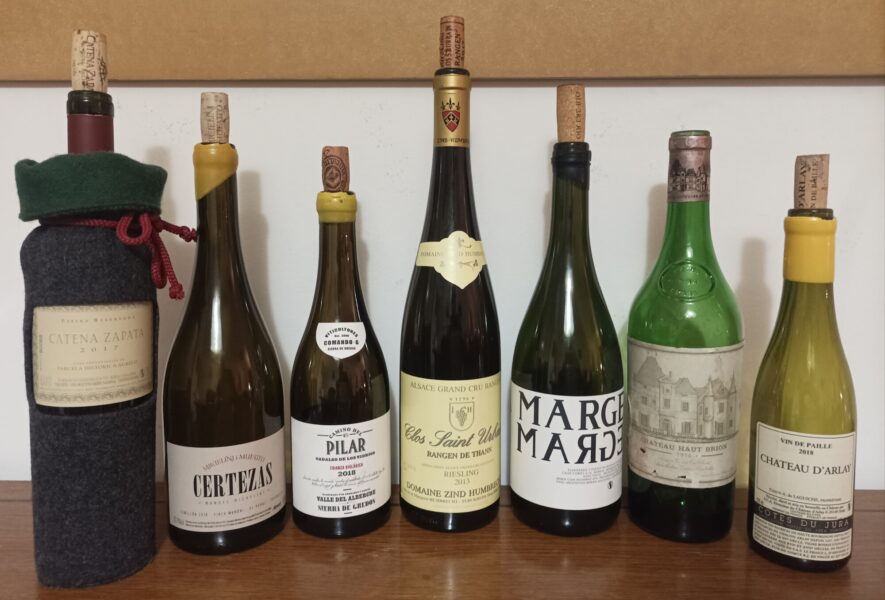
I now know, and having given the subject a little deeper thought, that mediocre and boring wine has always infact been around, just not in the quantity that it is available now. I also know that it’s not my palate that is to blame here. No way Jose, I made this discovery, albeit recently, that a lot of wine actually does look and taste the same, even though there is an industry dedicated to telling us all about the differences. It has just dawned on me that more than ever some very very mediocre (or what I am also calling here boring) wine seems to be everywhere these days, passing as ”delicious’‘, ‘‘natural” or “quaffable” (price/value relation etc. or just simply just cheap, nasty & almost affordable) by various pundits, hacks and wine drinkers, the people that I would normally have called serious palates in the wine biz. Maybe they have all just become serious promoters of the labelled wine, paid for by corporations to promote their wares. Even the pretty or funky designer label on offer these days, justifies all. Natural capsule, Stelvin capsules they love them all and want to tell you all about it. Come to think of it, even those new labels, thousands of them have now become a bit standard, mediocre and boring. I mean come on, Tattoos, silly art, stupid names and sometimes just too much awful and unecessary labelled information. The more stuff I see on the label the worst the wine, I promise you that! Unless one is of course just a bit of an old boozer, and absoluteley ‘nothing wrong with that at all’ I can hear some my dear readers and customers belching out aloud. But seriously, it’s pretty shocking that in this current time & state of our vinous history, we have to be subjected en masse and at all levels (top shelf to bottom shelf) of wine that is being offered & sold as proper wine that is quite simply Boring and Mediocre wine and can come with quite a hefty price tag. A bit like those pasteurized cheeses of United States and Argentina et al, or the chlorinated supermarket chicken et al. They all have zero character, none or very very little flavor and are really only good for cooking with, if one has to, or making a stock with. These types of wines and cheeses may all share a similar theme, characterless! I am not going to bang here on anymore about Parker 100 pointers, but as an example have you actually ever tasted a top Parkerized wine that you really liked? a wine with full potential character. On the whole NO! but okay, I did .. just once! and it was a heavenly bottle of 1989 Ch.Haut-Brion (Graves) drunk at dinner with chums and would love to repeat it one day before I turn cold. But my point is as you may guess, that as we are constantly being bombarded with wine offers, special discounts and wine news that all are paid for by sponsors and recommendations (how many points etc) of wine that just do not come to anything except pure vinous and financial disappointment. I read in one of the Trade rags a month ago that most wine is now being made like never before in the history of wine making. Apparently we are now living in an optimum and highly desirable moment where the wines that are being made all over the world are both clean and made with what they call precision! Progress has been made in wine making, and also in the vineyard they like to tell us. Well Hey! I am not so sure about all of that, and if I really do not want to drink these clean and precise wines, I want to drink wines that shout character from the balcony and a wine that I want to go back to again and again, filtered or unfiltered and to enjoy it’s fullness, (dare I say it) it should have personality, and not to be drowned out by vinous bourgeoiness & boringly mediocreness.
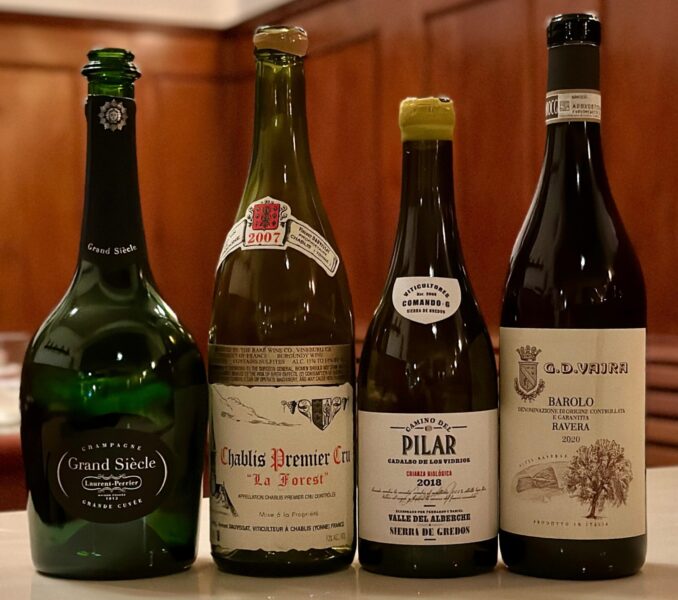
Maybe I am simply preaching to the converted here, apologies if that is the case, but here is as an example where you can taste 25 different Chianti’s, 25 different Argy Malbecs or 25 different world Sauvignon Blancs (or as this week is Albariño week look below at the tasting notes) and they all taste the dam same. White Burgundy! the new styled Chardonnays, all tastes the same. Thank goodness for the interest in Bourgogne Aligotes et al. Of course there is always a fellow/a on hand to schpeell the beans on how organic or whatever it is to sell the dam thing. But this is not progress at all, these are wines that do not nourish us the wine drinker, or the drinker’s vinous soul life at all, they are produced for one thing only, and that is corporate bottom line or to put it another way, produced simply to make a good profit! As we all know very well that this cannot be an easy task in the wine business. The old Bordeaux saying goes ‘‘to get into the wine trade, you start with a fortune and then you end up with nothing”. Alas, I am still alive and kicking, just, probably because I did not start with a fortune in the wine trade and had relative expectations as to what I could actually acheive and still do. My eldest, and then much younger, son (circa 15y/o) said to me some years back ”Dad, progress doesn’t necessarily mean things get any better” as we drove through a small Sussex village that had been transformed from a once very pretty, gorgeous countryside village (near Goodwood Racecourse) into a ghastly shopping high street. How could anyone do that. C’est la vie eh! Wine may have of course gone in the same crowd pleaser direction.
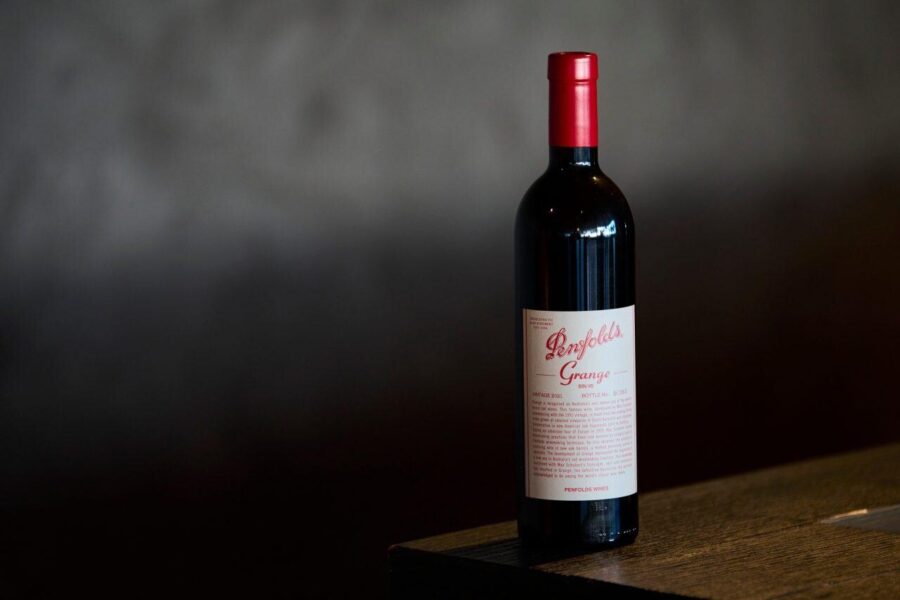
Only just today I have an interview here, made ahead of the new 2021 Grange vintage launch, in London, where Peter Gago (Penfold’s head honcho winemaker) expressed his confidence in the 2021 Grange, a wine that is always at the very top of Australia’s wine pyramid, and in some years, like this one he says, “it has every box ticked”. Box!? he says …yes dear reader, I get it okay, but really! “The ’21 Grange is in the league of the 2018,” he began, comparing this latest expression to one of the greatest recent vintages of this ‘hi-end’ wine (as they call these wines in the new world), before adding that the 2021 also shows similar levels of greatness to 2010 and 1990. Continuing with his comparison with these three great Granges: 2018, 2010 & 1990, he said, “I would say that ’21 is in that class.” (but really who would know or care as nobody as ever actually drunk this 600dollar Ozzie top notch red). However, he also said that it was too early to draw a rock-solid conclusion (oh! so one moment he has lots to say, and then suddenly has nothing to say. Who wants or needs rock-solid anyway!) on the 2021 vintage, because of its current youthful state. “Ask me the same question in 20 or 30 years’ time (oh la la should you be so lucky m8!) and I’ll be more definitive on where exactly it stands, but we’ve had great feedback on the ’21 Grange,” he said, referring to preview tastings with the Australian wine press, adding, “people have been really captivated.” He continued, “And it’s not just about length on the palate, the duration of that sensation in the mouth or the texture of the mouthfeel or whatever, ”it’s every box being ticked.” (and here we go again with that ticky-ticky box thingy!) He then goes on to say ”It’s a special year because ’21 Grange marks the 70th vintage since the first official vintage of the wine, which hailed from the 1951 harvest.” And now comes the best/worst bit for me and the point of this blogular blog-roar: ”Looking back at Grange over those 70 years, has it become a better wine due to technological advancements? “I’d like to think so, but I don’t believe my own press,” said Gago. “For all of us in the Penfolds’ winemaking team, it’s about all the one percenters now, the refinements, and that sounds a bit glib, but it really is,” he continued. By way of example, he said, “You know, back in the day, I knew it was new oak, but now you’ve got a lot to choose from, quite proudly with Quercus alba (American oak), and these oak made barrels are out of the AP John Cooperage (Barossa Valley).” He continued, “But the finessing now and the sourcing of that Quercus alba is all important … and the picking day we’ve always been obsessive about, but nowadays it’s a much greater focus.” Then there’s also the use of technology to make “huge refinements” in the vineyard “because that’s where it all happens,” he added. “So once you start adding up all these variables and what we’re doing over time, the wine should look better and let’s not forget to what happens on the bottling line: the technology of that is just so much more enhanced now,” he recorded. “So the wines should look and taste better than they did in the 1950s and 60s,” he summed up. However, because those wines are so good, and were made without the benefit of today’s tech, Gago admitted that “there is a lot of pressure to make today’s wines look significantly better,” before stressing, “but that’s not because we’re changing the style or the nature of the template.” Finally on this topic, Gago reminded us, “You know our winemaking methods and techniques are pretty much time proven, even if there are lots of refinements year by year by year, but Mother Nature controls everything, and that’s what we have to deal with.” Well, thank you Mr Gago, but I am not convinced by this going back and forth, ping pong chatty chat on technology and Mother Nature’s symbiotic relationship that you and a lot of winemakers and hacks and the general sales pitch are banging on about these days, there seems to be a famous Argy-virus called ‘we will sell anything to make a fast buck’. ”It’s not how you sell it, it’s how you tell it” but then again who am I..? A: A wine drinker always on the look out for good, honest red & white wine only! and let’s not forget some Champagne
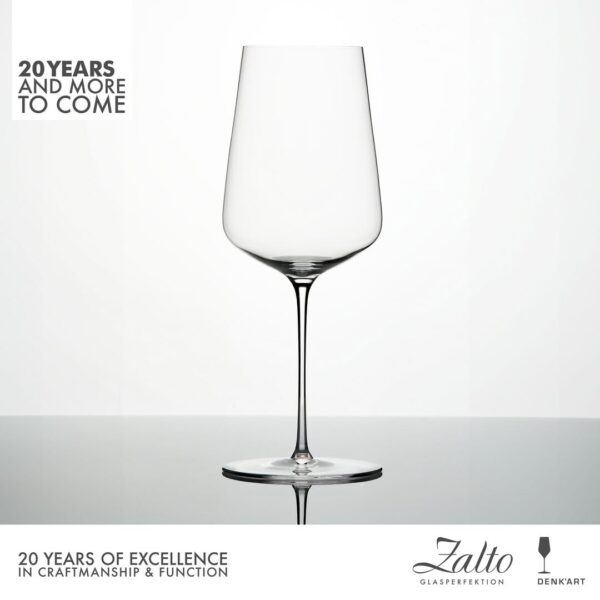
Having now gotten all of that off of my chest, forgive me, and to change the theme completely, 20 years ago this month (July 2005-2025) a small Austrian family wine glass firm, up there on the border of Austria and Czechoslovakia headed by Kurt Josef Zalto released his first hand-blown Universal ‘Denk’art’ wine glass. Other Zalto ‘Denk’art’ styles followed as we all now know very well: Bordeaux, Burgundy, Champagne and the rest. Outstanding wine glasses! and the pioneers in this field. This was a wine glass in ‘progress’ personified! Having been used to the Riedel experience for many years, the Zalto glasses completely took one’s hat off at any tasting or for that matter at lunch & also at dinnertime. It simply changed everything for the better. At the end of that same year we managed our first import to Latin America direct from the Gmünd Zalto factory. Initially, Argentine Customs officers did not like the fact the glasses where hand-blown and made from lead-free crystal, they had not seen anything like this before. In their eyes it was like importing an unpasteurized cheese (still illegal here by the way, in 2025, as it is deemed dangerous to the consumer) into the Republic. The whole of this first Zalto shipment was impounded by Argy Customs until they received the correct paperwork from us to say that the glasses where infact containing both soda-lime and borosilicate. (total nonsense of course!). It then took two months for them to send us the bill, we paid the import taxes (75% on the Zalto invoice value) and where then allowed to collect and take the pallet of glasses & decanters from their government warehouse. Every year since then we ship twice a year to Buenos Aires and fortunately have both private & trade (restaurant) customers for these top-vinous tools of the trade. In Argentina, some tend to say ”but these wine glasses are so expensive!” I have to remind them that they are infact not so expensive considering the shipping costs and taxes that need to be included in our ex Zalto price. On top of that if they are prepared to pay 200U$dollars and upwards for a bottle of more or less local Malbec, then why not spend some good money on your glassware. It always falls on deaf ears, even though a Zalto Bordeaux glass makes a Malbec taste a lot lot better. At my home, but please don’t tell anyone this sshhhh!, we tend to use a mix of Zalto, Conterno Sensory & Gabriel glasses. (Alas, all of my Riedel & Jancis Robinson glasses have been well used and well broken over the years, and will def. not be replaced). A big Happy 20th Zalto Anniversary!..and thank you very much Gretchen, Claudia and Rotweiller and all the Team at Zalto!
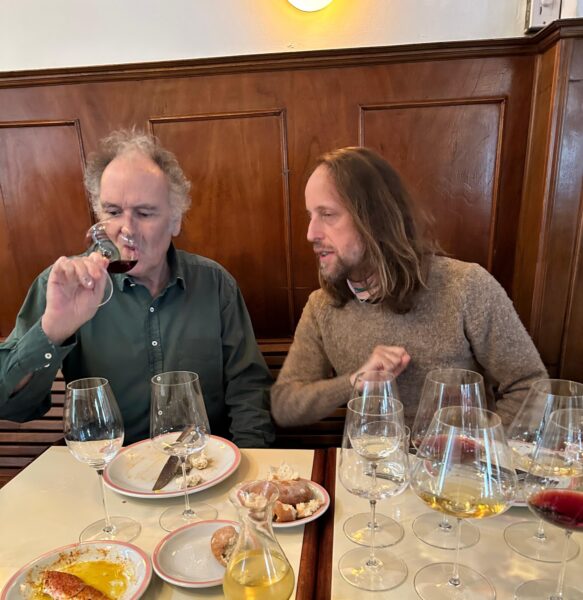
Here are those wine professional tasting notes I mentioned on Albariño to show you the point. This was a tasting of 14 different wines. Shipped to London to a famous wine journal, from six different countries: Portugal, Uruguay, Spain, Australia, Argentina and USA. All wines are from the same vintage and all had an alcohol content of between 13.0 – 13.5%vol and prices where pretty much the same (thirteen to fifteen £quid): Which one do you want to drink?
White peach and citrus characters. Densely fruited with a juicy palate and long finish.
Lemon verbena, coriander herbs and white flowers that dance over the nose and palate, mineral structure and citrus zest acidity.
Pear, peach, apricot and mandarin aroma with a herbaceous complexity and supple citrus acidity.
Juicy white peaches intertwine with a tangy nerve of acidity and a saline mineral character which persists towards the long finish.
Yellow apple, peach and white flower notes, lime zest acidity and a precise mineral finish.
Lime, lemon, passionfruit and white peach, purity of acidity and mineral freshness.
Peach, pear, apricot and orange blossom perfume, with salivating acidity and a progressive mineral structure.
Flinty peaches and citrus. Zesty acidity and a succulent salty finish.
Peach, apricot and grapefruit aromas. Crisp and rasping with a salty twist at the end.
Peach blossom invigorate the welcoming spritz on the palate, and infuse the appealing tangerine acidity. Crisp and long.
Peaches and citrus fruit aromas on the nose. Showing tension and a salty finish.
Peachy fruit aromas and notes of lemon blossom and lime juice. Bright and lively acidity.
Peachy nose with aromas of wet stones, citrus zest, white pepper and yellow flowers. Ripe palate, with a lovely tension.
Stone peach fruit character and salty undertones. The palate is rich with a lovely acid core. Saline finish.
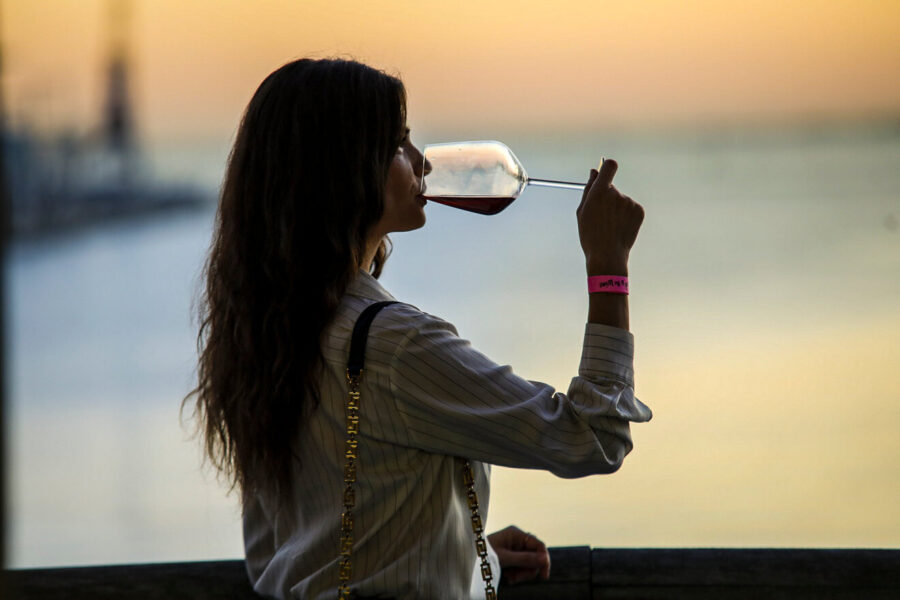
‘Les hommes soufflent dans le vagin du chameau pour voir si elle est enceinte!; ….. enough said!